With the progressive growth of the media, the contents that populate them have also suffered the same fate. As a result, companies have come to realize their importance as a sales and promotional tool and have learned to use them to their advantage. In this article we will talk about this, content marketing, from the definition to the various strategies with which it is possible to exploit it.
Content marketing: definition
Content marketing attracts users through various methods and on different platforms, driving more traffic to the businesses that leverage it. But what is the definition?
Content marketing involves the creation of valuable content with the aim of attracting and subsequently retaining consumers.
This principle is a cornerstone of inbound marketing, a branch of marketing that aims to attract customers and contacts through interesting and valuable content. To delve deeper into the topic, take a look at this article!
The purpose of content marketing is therefore to indirectly promote one's products, prioritizing generated content.
Content is created to inform, educate, and above all, retain consumers. In fact, once customers are loyal over time, they will purchase the company's products without the need for extensive and complex advertising campaigns.
Content of various types can be used in different stages of the sales process. This way, it will be possible to reach current or potential consumers for brand awareness purposes and relationship maintenance.
Content can take various forms: videos, photos, text, or even just audio in the case of podcasts. The important thing is that the primary goal of the element is to inform, generate interest, and attract potential customers in line with the target audience.

Strumenti del content marketing
After seeing the definition of content marketing, let's move on to analyzing some of the most commonly used channels for implementing this strategy. As mentioned earlier, content can come in different forms, from video to static to audio. Below are the main channels:
- Social media: undoubtedly the most common channels of all, capable of offering any type of content. In this way, with well-defined objectives, it will be very easy to leverage the right social platform to one's advantage.
- Blogging platforms: whether web-based or social, these platforms allow the creation of texts aimed at delving into topics of any kind.
- Email: particularly referring to newsletters, both promotional and non-promotional. In the former case, they are created for purely informational purposes, while in the latter case, they aim to retain customers through targeted and personalized promotions from one user to another.
- Podcasts: this format is gaining a lot of popularity in recent times due to its easy and immediate consumption.
These are just some of the channels through which a content strategy can be implemented, the most common ones. The choice of one over another will depend on the objectives the company intends to achieve, the target audience to reach, and the nature of the company itself.
Content strategy
In order to make the most of content marketing, careful consideration of strategy is necessary.
The first step is to outline the objectives, as developing a strategy without them would be akin to playing blindfolded. Objectives should be clear, precise, and measurable, allowing for the identification of any shortcomings and optimization of performance.
Once the objectives are established, it is necessary to determine the target audience to whom the content will be directed. Going further, it is important to create a "buyer persona", which represents the ideal prototype of a customer for the company or a specific product. This ensures that content is tailored to align with the preferences of the target audience, from visual aspects to the tone of voice.
Taking into consideration both the objectives and the target audience, it is advisable to research the best channels and formats to use. Diversifying and investing in multiple channels is important. Focusing solely on one channel may not be the wisest option, due to limited visibility and the rapidly changing digital landscape.
At this point, it is crucial to develop a digital editorial plan, or "PED", where all the content to be created and published is scheduled on a monthly basis. This helps to avoid leaving anything to chance and strategically plan and create content to achieve the objectives.
Once the content is created and published, its performance should be carefully monitored and analyzed. Only in this way can one determine if the strategy is genuinely successful or if it needs to be modified and optimized.

Content marketing and storytelling
One of the most effective techniques to rely on when creating content for a digital strategy is storytelling. However, storytelling should not be limited to writing long narratives, but primarily used as a means of communication. Stories are a powerful tool to engage the audience and convey messages effectively.
Storytelling aids in defining the content of content marketing through the 5 W's of journalism. These elements help determine the best way to "tell" a topic to the target audience, whether it is an actual story or a unique aspect of a product or service. What are these 5 W's?
-
Who: Define the subject of the narrative, i.e., what is used to tell the story of the product or service.
-
What: This point is used to define what happens in the narrative.
-
Why: Define the reason for the narrative.
-
When: Establish the timing of the narrative, whether it occurs during a specific time of day or year.
-
Where: Finally, determine the location where the narrative takes place.
The term "narrative" refers to the actual content element. Storytelling can be conveyed not only through words but also visually.
Conclusion
The definition of a content marketing strategy places content as the main element offered to users. These content pieces are created after careful analysis based on objectives and target audience, with the aim of informing and retaining customers over time.
At Ekeria, a digital agency, we utilize our expertise to assist businesses that seek our support. Together, we achieve agreed-upon objectives by employing the best strategies, including those related to digital content creation. Contact us for a free consultation and share your objectives. We will help you reach them.
.webp)





